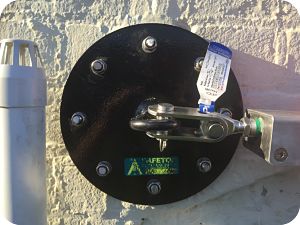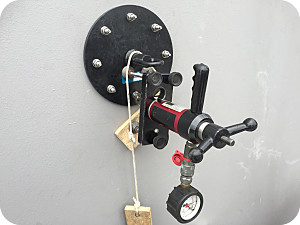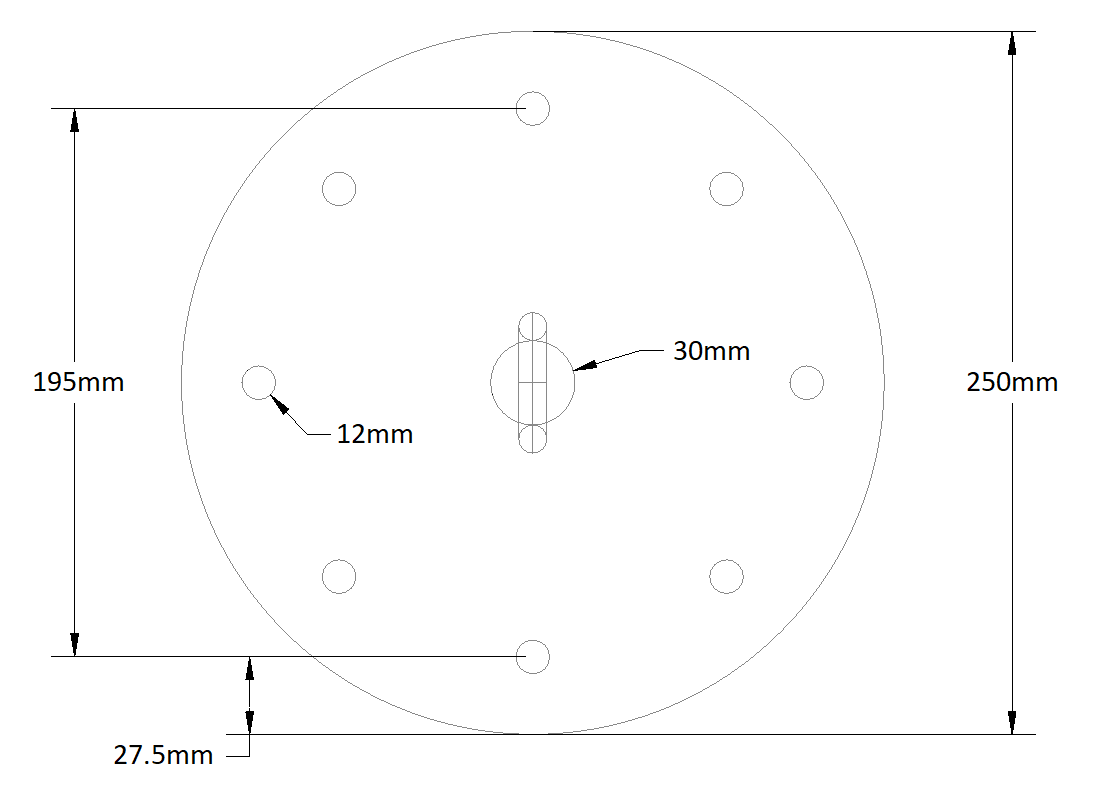Tri-Chem Concrete Anchor
Tri-Chem Concrete Anchor
This anchor is recommended for: fall-arrest, abseiling, and lifeline systems. 8 x M10 standard threaded anchor rods are used with HVU-Adhesive capsule anchor system.
Each Tri-Chem bolt must be load tested to 3kN before bolting mounting plate to concrete structure this would rate the attached anchor at 12kN to 21kN. (See 2nd picture)
Safetor height safety concrete anchor points have been designed to either be bolted through concrete walls, reinforced into concrete or be bolted to concrete surfaces using no less than eight chemset bolts. It has been proven that single bolted eyes are unreliable as a number of them have had a tendency to pull out when used.
Many things can cause them to fail like building movement due to earthquakes, cracking concrete, poor installation, load cell testing on a single bolt, and the concrete itself. Having the load shared by more than one attachment point you increase the safety factor. Our method of using eight attachment points on our Tri-Chem anchors increases our safety factor by 8 times the normal standard.
Ultimate Yield:
21kN parallel to mounting plate 2lkN away from mounting plate
Application as per AS/NZS1891.4:2009
- 1 persons Free-Fall Arrest = 15kN
- 2 persons Free-Fall Arrest = 21kN
- 1 persons Abseil Anchor = 12kN
Coatings
Plascoat PPA 571 ES is resistant to stress cracking, adverse weather conditions, detergents, salt spray and typical airborne pollutants. The coating maintains excellent adhesion to the metal substrate without the need for a separate primer. The material also provides good abrasion and impact resistance.
Safetor Height Safety Anchors
Are protected with a robust Thermoplastic Powder Coating which must be inspected before and after use for any surface scratches that has damaged the coating system. It is most important that these scratches are addressed straight away. It is very simple, all you need to do is use a heat gun to fuse the Thermoplastic Powder Coating back together to remove the scratch altogether. It is very easy to protect the anchor coating with the use of tape or a piece of rubber/cloth this should avoid any scratching while inserting the carabiner.

Safety Factor
Physics is the scientific study of forces. In simple terms, the wheel on the standard car today has around five wheel studs and nuts this is so the load is shared evenly around the rim. Trucks have much larger tyres cars so they need bigger wheel studs, and a lot more of them to share the load around the rim. This is a similar principle to why we use eight mounting points on our anchor instead of one.
Warning
All these types of anchors must be cell load tested before use. Before installing any chemical anchors it is important to read and understand all the manufacturers recommendations on the correct use and procedures to install bolts.
Collins Corporation Ltd. recommend the use of HILTI products for the installation of concrete fixed anchors.

